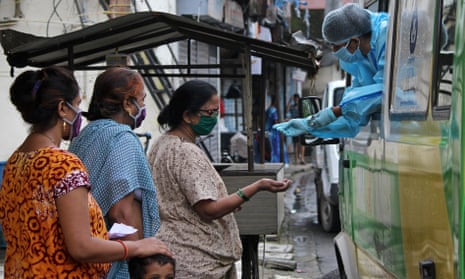Nearly five months to the day since the World Health Organization declared a global pandemic, Covid-19 infections have passed 20 million cases. In acknowledging the milestone, the health body’s chief warned against despair, saying if the virus could be suppressed effectively, “we can safely open up societies”.
Global cases reached one million at the start of April. By 22 May, there were 5 million cases. That figure had doubled to 10 million cases by the end of June, and, seven weeks later, it had doubled again to 20 million infections.
The WHO’s chief Tedros Adhanom Ghebreyesus has said he thinks despite the “great deal of pain and suffering” and the growing numbers, “there are green shoots of hope and ... it’s never too late to turn the outbreak around.”
Tedros gave examples of countries that had successfully clamped down on the spread of Covid-19, citing New Zealand and Rwanda, and praised nations that had suffered major national outbreaks and were now responding quickly to local spikes.
“My message is crystal clear: suppress, suppress, suppress the virus,” he said. “If we suppress the virus effectively, we can safely open up societies.”
With much of the world caught in a cycle of outbreaks and economically crushing lockdowns, all eyes have been on the race for a vaccine. A WHO overview said 165 candidate vaccines were being worked on around the world, with six reaching Phase 3 – or large-scale human trials – of clinical evaluation.
But the WHO’s emergencies director, Michael Ryan, warned that a vaccine was “only part of the answer”, pointing to polio and measles as diseases with vaccines that have not been fully eradicated. “You’ve got to be able to deliver that vaccine to a population that want and demand to have that vaccine,” he said.
In the US, the Trump administration was considering measures to block citizens and permanent residents from returning home if they are suspected of being infected.
A senior US official told Reuters that draft regulation, which has not been finalised and could change, would give the government authorisation to block individuals who could “reasonably” be believed to have contracted Covid-19 or other diseases.
The seven-day rolling average of infections continued to trend down at 53,507, according to the US Centers for Disease Control. Los Angeles county, the largest county in the US had more than 200,000 cases, followed by Florida’s Miami Dade county, with 132,000 cases.
In Australia there was some relatively good news on Tuesday, with the state of Victoria recording 331 new cases of the virus (down from the peak of 725 on 5 August), boosting hopes that case numbers were stabilising after a big infection surge sent the city of Melbourne into a strict six-week lockdown. There were also 19 more deaths.
The premier, Daniel Andrews, said he wasn’t prepared to to provide any “definitive claims about trends”, but struck a more positive tone than in recent weeks. He said the lockdown measures had reduced tram journeys in Melbourne by 90%.
“That data bears out that the [lockdown] strategy is working,” Premier Daniel Andrews said on Tuesday.
Singapore’s virus-affected economy shrank almost 43% in the second quarter, in a sign that the country’s first recession in more than a decade was deeper than initially estimated, official data showed on Tuesday.
Tough curbs within the city state to contain the pandemic took a heavy toll on the economy, which is largely dependent on global trade and tourism. The GDP fall in the three months to June from the previous quarter was worse than the government’s advance estimate of a 41.2%, the trade ministry said. Year-on-year, the economy shrank 13.2% in April-June, more than the initial estimate of 12.6%.
The worse-than-estimated figures will ring alarm bells for other Asian economies reliant on trade as typically, Singapore is hit first before ripples spread across the region.
The global death toll sits just over 733,000, with the US (163,000), Brazil (101,000) and Mexico (52,000) recording the most fatalities. The region of Latin America and the Caribbean has the most infections, with 5.6 million cases. It has continued to see rapid spread, with more than half a million new cases in the past week alone.
India is the country with the most new infections over the past week (402,287), ahead of the United States (376,471).
On Tuesday, China recorded 44 cases, but only 13 were locally transmitted – all in Xinjiang. Since the virus emerged at the end of 2019, there have been 84,712 confirmed cases and 4,634 deaths, according to official figures from the country’s national health commission.
In other developments:
The European Union’s health agency has called on states seeing an increase in cases to reinstate control measures, as it warned of a “true resurgence” or “risk of further escalation of Covid-19” in several countries.
Greece is “formally” in the midst of a second wave of the pandemic, one of the country’s top infectious disease experts said.
In New Zealand, Dr Ashley Bloomfield, the country’s beloved director-general of health, has taken a Covid-19 nasal swab during a live news conference in order to encourage the public to accept the tests if offered.
